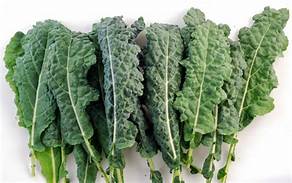Importance of well balance diet
All food contains all of the nutrients we need to be healthy, it is necessary to eat various foods in sufficient amounts. A good diet will include many different foods, and sufficient in quantity and quality to meet an individual’s need for food energy and other micro nutrients.
QUINOA
Typical serving size:
½ cup, cooked (33 oz or 93 g)
HOW IT HARMS
Kidney stonesWHAT IT HEALS
Celiac disease Cancer Heart disease Diabetes Obesity QUINOA FACTSAlthough it is often classified as a grain, quinoa is actually a member of the same plant family as spinach
While the green leafy quinoa (pronounced KEEN-wah) tops are edible, it’s the seeds that are served most frequently
For more than 5,000 years, quinoa has been the staple food of peoples of the Andes, where it is one of the few crops that grows well in the dry mountainous climate and poor soil
The tiny quinoa seeds are packed with important nutrients: A ½-cup serving provides about 2 mg of iron, more than any unfortified grain product
It also contributes large amounts of several other essential minerals, including 45 mg of magnesium, 87
5 mg of phosphorus, 157
5 mg of potassium, and 0
75 mg of zinc, as well as numerous B vitamins, especially B6, folate, niacin, and thiamine
Most of the calories in a cup of cooked quinoa come from complex carbohydrates
However, it also provides protein, which is of a higher quality than similar products because it provides lysine, an amino acid missing in corn, wheat, and other grains
Health Benefits
Provides nutrient boost to gluten-free dietsWhile the only “cure” for celiac disease is the complete removal of gluten from the diet, gluten-free grains like quinoa can help ward off certain nutritional deficiencies that may accompany going gluten free
According to some recent research out of Columbia University, incorporating quinoa into a healthy gluten-free diet can result in measurable improvement in protein, iron, calcium, and fiber levels
Protects against cancer and heart disease
Quinoa is a good source of saponins, phytochemicals that help to prevent cancer and heart disease
Helps regulate blood sugar and high blood pressure
Researchers in Brazil found that quinoa has important potential for helping people with diabetes regulate their blood sugar and high blood pressure better
Out of 10 different grains and cereals studied, quinoa provided the most quercetin and antioxidant levels overall
Its low glycemic index and load are also helpful for blood sugar control
Fights obesity
While quinoa’s high fiber content makes it an obvious choice for helping control the appetite, some exciting new lab findings in Paris seem to indicate that quinoa may eventually play a more specific role in fighting obesity
Researchers there observed that mice fed a high-fat diet didn’t continue to gain weight after their meals were supplemented with quinoa extract
They also noted that the mice showed less insulin resistance and that several inflammation markers in their blood were reduced as well
Health Risks
Kidney stonesQuinoa is related to spinach, chard, and beets, so it also contains oxalates (sometimes in substantial amounts), which can lead to the development of some types of kidney stones in people who are prone to them
The oxalate content of quinoa ranges widely, but even the lower end of the oxalate range puts quinoa on the caution or avoidance list for an oxalate-restricted diet




